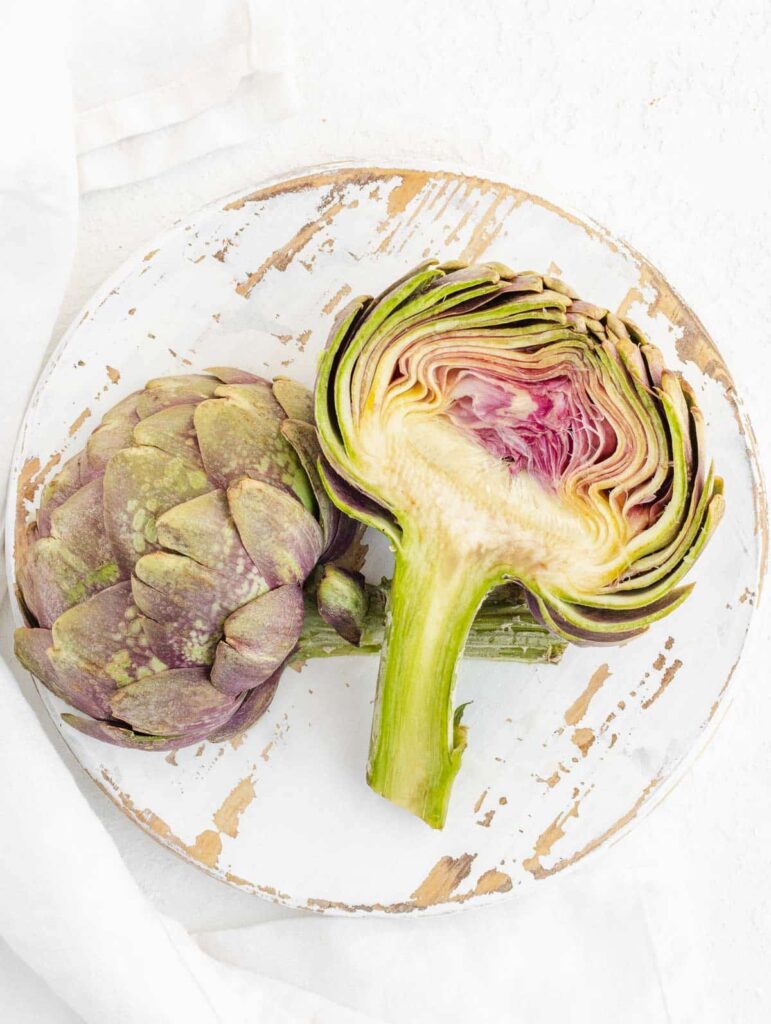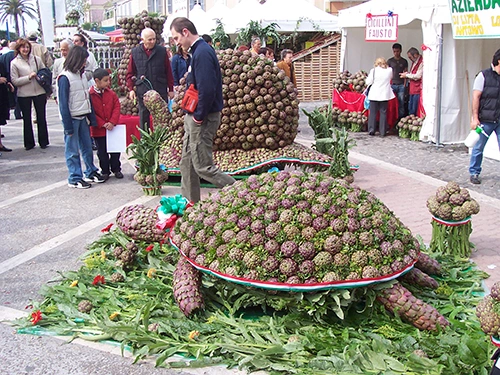
We pay homage to an Italian food hero: The artichoke
Ask most Italians living abroad what they most miss about their country, and chances are food will come at the very top of their list. Not just food in general, mind, but specific ingredients, staples and recipes they can only get at home (or that just taste better in the Bel Paese). Among them, the humble carciofo – artichoke – is likely going to make an appearance. Sure, you can find artichoke hearts – their most delicate part – in cans or glass jars in almost all western supermarkets these days. But the real thing? The fresh, ugly vegetable whose thick green leaves are arranged like the petals of a flower? That’s something you’ll be hard pressed to find outside the boot-shaped country.
And that’s too bad. Carciofi are a huge part of Italy’s culinary canon, and a delicious addition to a hearty Italian meal – though only during winter, February in particular, when they hit their prime and turn into food markets’ staples.
Though their origins aren’t rooted in the peninsula – the word carciofo actually derives from the Arab al-kharshuf by way of Greek mythology, although Italians developed the varieties that you now find in Europe – these delicious thistles-like foods have in fact been used in Italian cuisine for centuries, becoming the foundation of countless traditional dishes.
Travel across the country and you’ll find them boiled, fried, sauteed or roasted, in soups and risotti, with spaghetti or as side dishes. Hungry to know more? Read all about this spiky vegetable below – then get inspired by La Posta Vecchia’s Chef Antonio Magliulo’s very own recipe for them.
A Mediterranean Force
According to Greek mythology, the origin of the word artichoke can be traced back to none other than Greek god Zeus, who, while visiting his brother Poseidon, caught sight of a beautiful woman named Cynara and instantly fell in love with her. After seducing her and making her a goddess, Zeus brought Cynara to live on Mount Olympus, where, however, she began to feel lonely and miss her family. Cynara began visiting them in secret, only to be found out by Zeus who, enraged, threw her out of Olympus and transformed her into an artichoke. From then on, the legend goes, the unfortunate girl’s name, Cynara went on to become the scientific name for artichoke – cynara cardunculus.
As for the plant itself, scientists believe that both the modern cultivated artichoke and the cardoon – its wild counterpart – descended from the wild cardoon, a tough, prickly plant that likely originated in north Africa and Sicily. In Roman times, artichokes were thought to have medicinal benefits like curing baldness, strengthening the stomach, aiding the conception of male heirs, freshening the breath, and even serving as an aphrodisiac. The Roman ate them pickled in honey and vinegar, and seasoned with cumin, but it was the Arabs who really favoured their spread across the Mediterranean (that’s how the name al-kharshuf turned into the Spanish alcarchofa, the Italian articiocco, and the English artichoke).
Over the centuries, artichokes found popularity across European courts, with the Italians being their biggest fans (Caterina de’ Medici was said to have introduced them to France when she moved there at age 14 to marry Henry II, and Caravaggio once attacked a waiter over a plate of artichokes. If that’s not love, we don’t know what is). From Lombardy to Lazio, artichokes became king of the table through a variety of inventive recipes – some of which even came to define specific branches of our cooking, like Roman-Jewish cuisine.
A Roman Staple

Among the many ways to eat carciofi in the Bel Paese, carciofi alla giudia – Jewish-style artichokes – and carciofi alla Romana – Roman style – might easily be the most beloved.
The former is a traditional recipe that can be found in cookbooks going as far back as the 16th century and consists in deep-frying the artichokes until the leaves are deep golden brown, crisp, brittle and charred, the heart within fudgy and soft.
The latter involves trimming the thistles, then filling their central cavity with a mixture of finely chopped mint – crucial! – garlic, and potentially parsley, and placing them stem upwards in a pan, along with olive oil, wine, and water. A damp cloth and tight-fitting lid are then used to cover the pan, and the artichokes are slowly cooked, braised and steamed, over medium heat until the liquid has almost evaporated, and the artichokes are aromatic and meltingly tender.
Both utterly delicious, these dishes showcase artichokes at their most satisfying, and are classics you’d find in most Roman trattorias – although for the very best Jewish-style ones, you should always go to the Eternal Capital’s Jewish Ghetto (we especially love Al Pompiere).
But carciofi can also be used as a garnish or a flavouring agent in many other Italian dishes, from bruschette to frittate. They can also be used to add flavour and depth to sauces, such as in the classic dish pollo alla romana (Roman-style chicken), which features chicken braised with artichokes and white wine. Or why not, enjoyed roasted, as per recommendation of La Posta Vecchia Chef’s Antonio Magliulo.
Chef Antionio Magliulo’s Roasted Artichokes with Ricotta and Herbs

Ingredients
One bunch of basil
One bunch of parsley
One clove of garlic
A generous glug of extra virgin olive oil
A glug of white wine
Four artichokes
300 grams sheep’s ricotta
Salt and pepper
Method
- Blanch the parsley and basil in salted boiling water for 2 minutes, then cool in water and ice, drain and blend with extra virgin olive oil until you obtain a smooth cream. Season with salt.
- Clean the artichokes by first pulling away the darker tougher leaves, pulling them down towards the base and snapping them off just. Remove the external leaves and then, using a sharp knife, pare away the tough green flesh from the base of the artichoke and stem.
- In a pan, add olive oil, salt and a clove of garlic until golden, then pour in the white wine and let them cook for 20 minutes. At this point, heat the oven to 180C/160C fan/gas 4 and roast for 20 minutes, until tender inside and crispy outside.
- Take out of the oven and let them cool. In the meantime whip some sheep’s milk ricotta with oil, salt and pepper. Stuff the creamy concoction in the artichoke.
- Use the herb mix to garnish the plate, then place the artichoke on top and sprinkle some fresh herbs to finish.
An Artichokes Extravaganza

Want to dive into the universe of carciofo and the myriad ways to enjoy it? Then make sure to visit the Sagra del Carciofo in Ladispoli, Lazio – not far from La Posta Vecchia! – on April 14, 15 and 16, celebrating the Roman artichoke.
Or you could visit the Sagra del Carciofo in Cerda, Sicily (also in April), the Sagra del Carciofo in Uri, northern Sardinia (March), or the one in Senigallia (May), in the Marche region.
